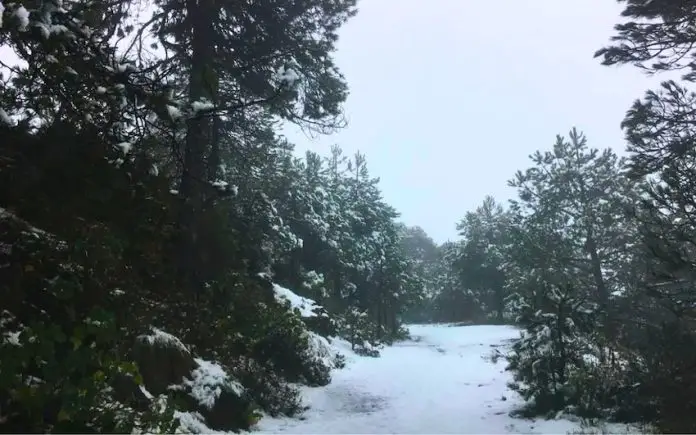An arctic air mass and a cold front combined to produce some postcard-worthy snapshots Tuesday morning in central Mexico — and some good headlines.
“¡Blanca Navidad!” (White Christmas!) beamed one, while others read “Tormenta de nieve” (snowstorm) and “Nevada deja bellos paisajes” (snowfall leaves beautiful landscapes).

Flakes fell at higher elevations overnight, leaving a snow-capped scene on the top slopes of Xinantécatl – better known as Nevado de Toluca – in México state. At 4,680 meters (15,354 feet) above sea level, the stratovolcano is the fourth-highest Mexican peak.
Additionally, Jocotitlán Hill in México state looked like a winter wonderland in some parts. The “hill,” where television broadcast antennas are located, is actually an inactive volcano that shoots up to 3,953 meters (12,969 feet) above sea level, making it Mexico’s 12th-highest peak.
Adrián Romero, director of civil protection agency Sinaproc, said that additional snowfall is expected on Tuesday, or overnight into Wednesday, in areas at least 3,800 meters (12,467 feet) above sea level. No communities are situated that high, he added.
The effects of cold front number 16, which arrived less than a week after cold number front 15, included cold temperatures throughout the country, including –7° C in Sonora and –8° C in Chihuahua. In the north, it should remain frosty throughout the week because another cold front is expected Wednesday or Thursday.

The National Meteorological Service predicted that cold front number 16 will extend today to the western Caribbean Sea, causing heavy to very heavy rains in southern portions of Mexico.
Downpours have already caused rivers and streams to rise in northern Chiapas.
Authorities there reported that 24 homes were flooded amidst landslides and road closures in the municipality of Tila, Chiapas. The flooding there trapped three people in their homes, but they were rescued and taken to a shelter.
Temperatures on Tuesday in the Valley of México are expected to range from 1° to 17° C. Snow might resume falling at higher elevations, mainly on volcanoes such as Pico de Orizaba, Mexico’s highest peak (18,491 feet), Popocatépetl (Mexico’s second highest peak) and Iztaccíhuatl (the third highest).
With reports from La Jornada, Aristegui Noticias and TV Azteca
